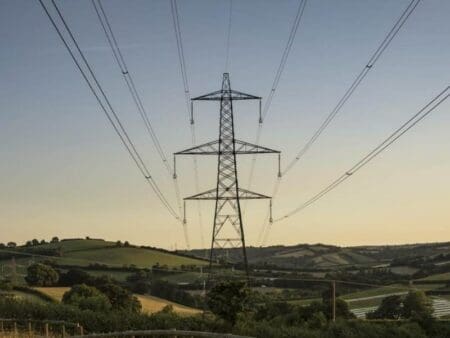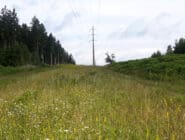
Britain’s Electricity Networks Commissioner Nick Winser has reported that the building time for new transmission lines can be halved.
Currently the length of time taken to build new electricity transmission from identification of need to commissioning is 12 to 14 years but it could be reduced to seven years, Winser has found in a new study undertaken with the Energy Systems Catapult.
This would then bring the construction time in line with for example that of large wind farms and would expedite their integration to the system and reduce the risk of congestion.
The building of new infrastructure – and aspects such as permitting, which is often highlighted – are potential constraints to the meeting of the net zero targets.
Have you read?
Net zero in UK hinges on transmission grid upgrades – Aurora Energy
E-mobility deployment and its impact on European transmission and distribution grids
Few new transmission lines have been built in Britain over the past 30 years and investment has not matched that into renewables. For example, the ‘queue’ to connect to the grid is extremely congested, with more than 230GW of generation waiting, compared to approximately 80GW of generation currently connected.
Moreover, a dramatic increase will be required through to 2050.
Winser, the former CEO of National Grid who was appointed the first Electricity Networks Commissioner in July 2022, was tasked with reducing the transmission line build time by three years but has gone further than that, saying it “would remain too long”.
He finds that the current process is complex and involves many different parties.
While significant improvements have been introduced in recent years, the process still has many unfortunate attributes, he indicates. The process for identifying need for new transmission assets is not efficient, the regulatory process is not settled or operating at a system level and planning lacks political or engineering context.
Every part of the process must be, and can be, dramatically improved, says Winser, who provides 18 sets of recommendations, which must be adopted as a package, to meet the 7-year timeline from identifying the need to commissioning new transmission assets.
Proposed transmission development process
Broadly, the report outlines, in the first-year certainty of need will be established early in the process, allowing for appropriate resourcing of design and appointment of contractors in the second year.
The corridor routing stage has been optimised to six months through use of meaningful automation while maintaining assurance of outputs through the efficient involvement of technical experts.
The route design process will be streamlined through standardisation which also facilitates and supports engagement with communities.
By the end of the second year, the supply chain can be engaged, and manufacturing slots can be booked in advance, reducing pressure in the procurement process. With this, detailed designs can be finalised by the end of the third year.
Simultaneously, a streamlined pre-application process can occur informed by surveys available through simplified land access and data sharing mechanisms.
By mid-way through the fifth year approvals and land purchases should have been achieved, allowing for an earlier build start and delivery within seven years.
“Delivering 50GW of new wind power and 24GW of new nuclear will be a major step towards decarbonising our economy and providing customers with clean, secure, affordable electricity, but that magnificent achievement will be wasted if we cannot get the power to homes and businesses,” Winser says in a statement.
“The challenge to me to reduce the timescale for building strategic transmission by three years, and ultimately by a half is the right one. I am confident that this is achievable as long we streamline the process as proposed in the report; and take a transparent, respectful and efficient approach when engaging with people and communities about the impact.”
A key aspect on which the report states further work is needed is to define “with crystal clarity” the roles and responsibilities of the various parties under the proposals, in particular, the government, the regulator Ofgem, the Future System Operator – which should be established quickly – and the transmission owners.
The future system operator is intended to bring together the planning for the electricity and gas systems, and potentially systems for new technologies like hydrogen and carbon capture and storage, into a single institution.
The three transmission operators are National Grid Electricity Transmission, Scottish Hydro Electric Transmission Ltd and SP Energy Networks, which connect with the fourteen distribution network operators across the regions.








